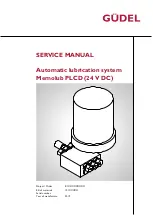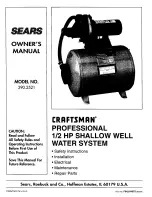
13
Controls the rate limiting nutrient
transport into the biofilm
Water flow
Controls the targeted substrate
concentration adjacent to the bead
Controls oxygen transport to the biofilm
Controls turbulence at the biofilm water
interface
Best biological treatment is
associated with the highest
achievable flows
Mean cell residence
time (MCRT)
Determines the type of bacteria and
protozoa that will be found in the filter.
In recirculating aquaculture applications, PolyGeyser
®
are widely used as bioclarifiers simultaneously
removing suspended solids, dissolved organics, total ammonia nitrogen (TAN) and nitrite nitrogen. Here
the limiting process step is usually TAN conversion since the TAN must diffuse into the biofilm prior to
conversion. Carbon to nitrogen ratios are relatively stable being fixed by the protein content range of
the feed. Backwash frequencies must be increased with organic loading (pounds feed/cubic foot beads
per day) to offset the smothering effect of heterotrophic bacteria on the slower growing nitrification
bacteria. The general guideline for backflush frequencies is illustrated in Figure__.
In recirculating applications, the backwash tuning success is reflected in the TAN and Nitrite
concentration. It is not uncommon to see the TAN concentration reduced by 50% with a small change in
backwash frequency. The limits of backwash frequency are defined by the nitrite oxidizing bacteria
(NOB). Backwash too often and the NOB are “washed out” as the biofilms mean cell resident time
(MCRT) drop; Wash too slowly and oxygen transport into the biofilm will drop, triggering or reversing
the NOB oxidation process. So watch for the telltale rise in nitrite as you optimize backwash
frequencies.
In domestic wastewater treatment where biological oxygen demand (BOD
5
) and Total Suspended
Solids (TSS) are targeted, frequencies tend to be high (once every 3 hours) to maintain hydraulic
conductivity of the bed.
The backwash frequency for biological operation is largely controlled by the
organic loading (kg-BOD
5
/m
3
of bead-day). Failure to backwash frequently enough leads to clogging of
the bead bed as heterotrophic bacteria attack readily biodegradable organics.
















































